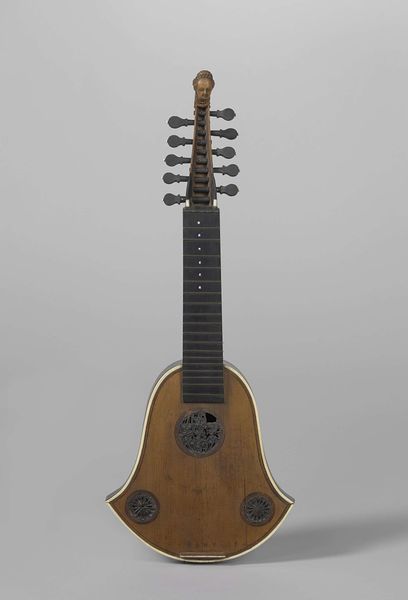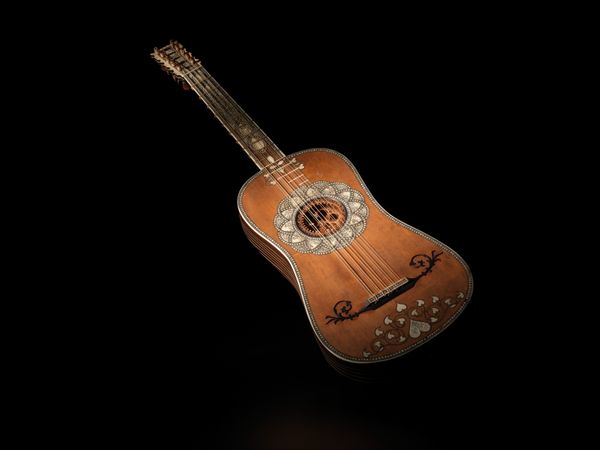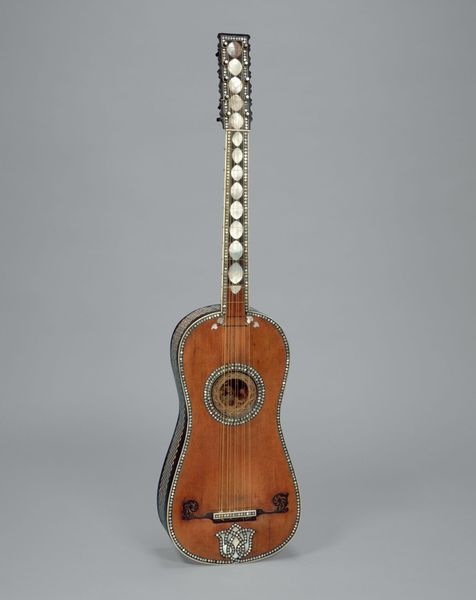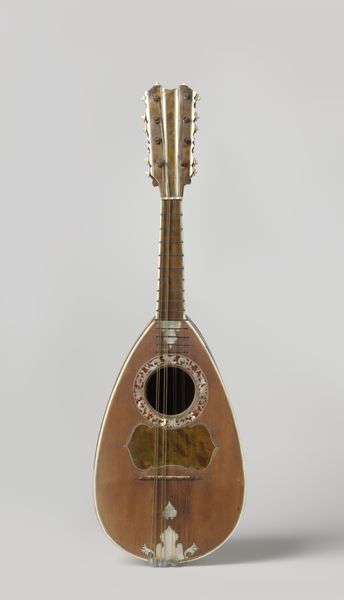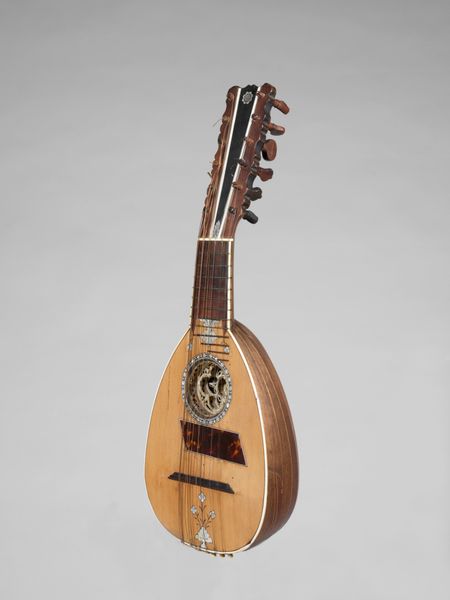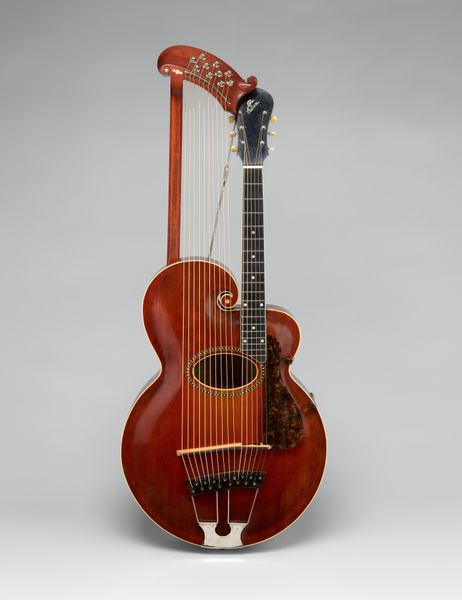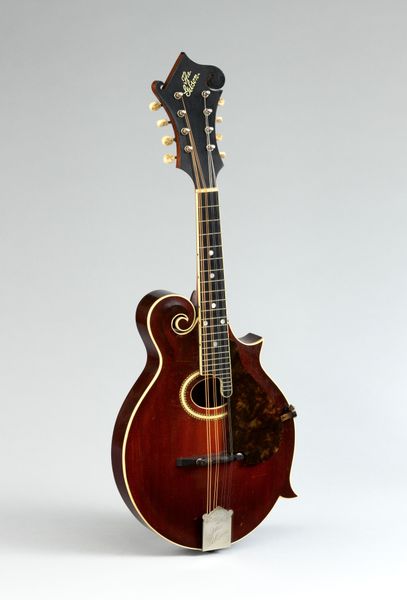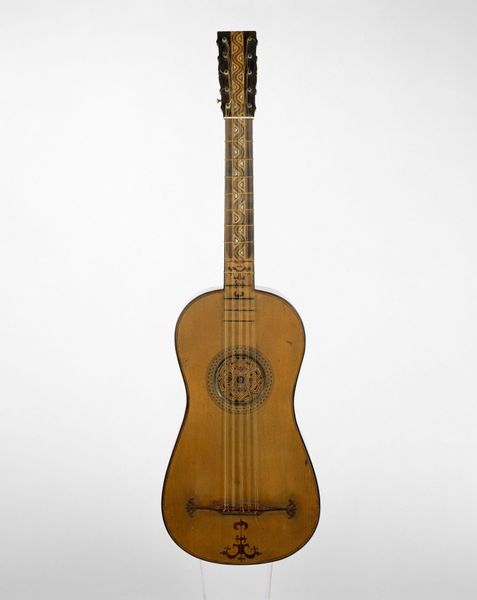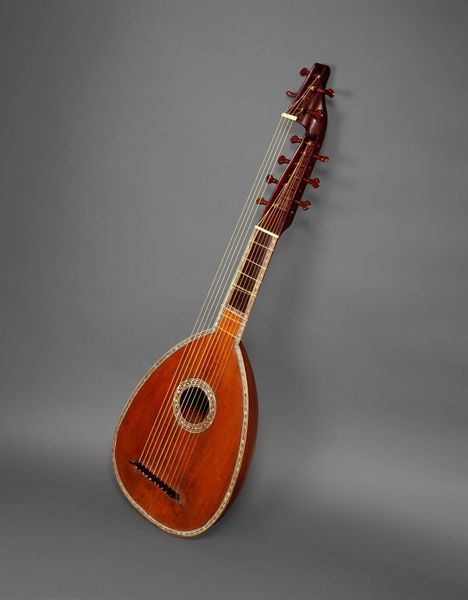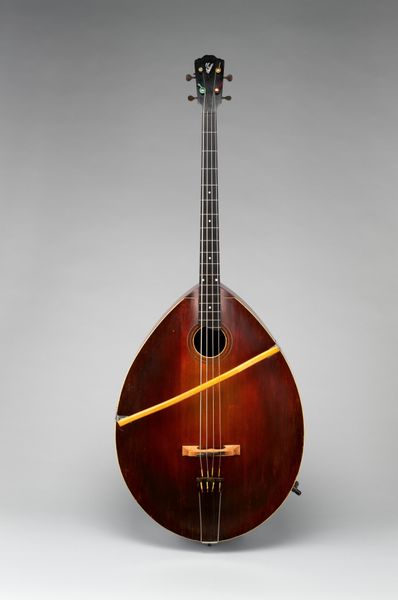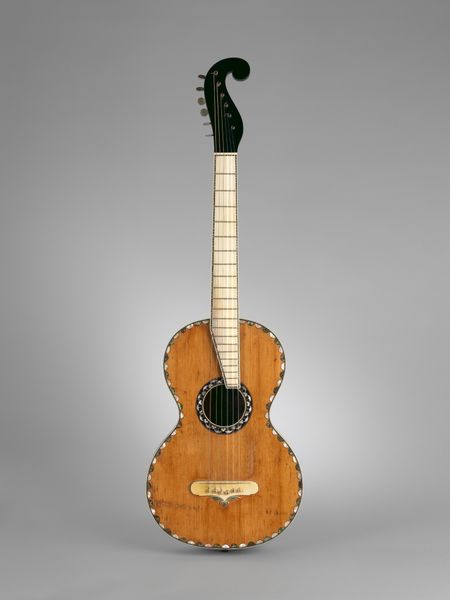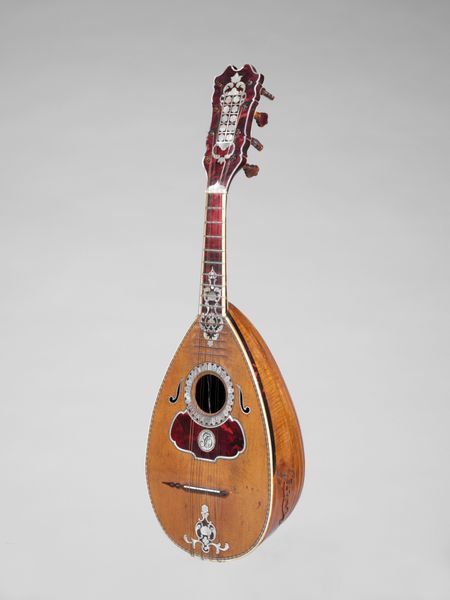
photography, wood
#
close-up photo
#
baroque
#
close up photography
#
photography
#
wood
#
close-up photography
#
musical-instrument
Dimensions: 24 7/8 × 9 5/16 × 2 in. (63.2 × 23.7 × 5.1 cm)
Copyright: Public Domain
Curator: We’re looking at a cittern crafted between 1680 and 1690 by Joachim Tielke. It's a baroque beauty currently residing at the Metropolitan Museum of Art. Editor: It strikes me as both delicate and sturdy. A bit like a well-preserved secret. It just exudes craftsmanship. You can almost hear it. Curator: Absolutely, and the level of detail here speaks volumes. Think about the social context of its creation: it wasn’t mass produced, it was individually made, laboriously and skillfully. Consider the carpenter learning this particular niche. Editor: Right? Imagining that artisan laboring, his mind consumed by ornate details... that makes the instrument come alive. I see swirling motifs inlaid with a stark monochrome palette – almost ghostly. The maker, Tielke, sounds fascinating. What else can we unpack about this meticulous instrument? Curator: Tielke was renowned for his exceptional craftsmanship, pushing boundaries by using contrasting materials. That ivory inlay, it’s meticulously fitted against the dark wood. And note the use of ebony which also underscores its luxury status within Baroque society. These materials would be imported. Editor: Imported exotica… ah, the scents and textures that must've inspired. Seeing it, you know, it almost makes me feel transported back to some dimly lit salon filled with courtiers, powdered wigs and scandalous secrets. Do you think such a delicate piece even touched the fingers of a king? Curator: Its ornamentation signals aristocratic consumption, and these materials were expensive. Someone with the right means definitely commissioned this. This instrument's construction would have involved specialists at every phase in its assembly line and reflects a particular type of consumerism for the period. Editor: The instrument now stands as a silent observer. Imagining the music, imagining the people who handled it—gives it such personality! I can almost smell the rosewater and hear muffled giggles as music filled opulent halls. Curator: A tangible reminder of past labor practices. And a demonstration that “fine” art relies just as heavily on its material conditions as any humble “craft”. The labor history and materials history, woven together by its creator's artistic vision, come alive for us to consider centuries later.
Comments
No comments
Be the first to comment and join the conversation on the ultimate creative platform.

